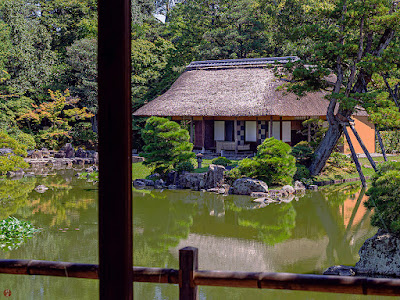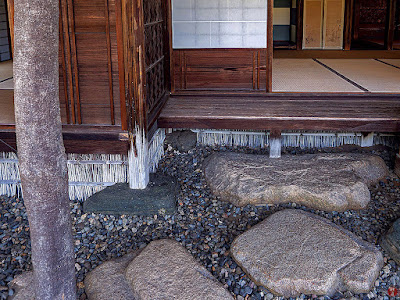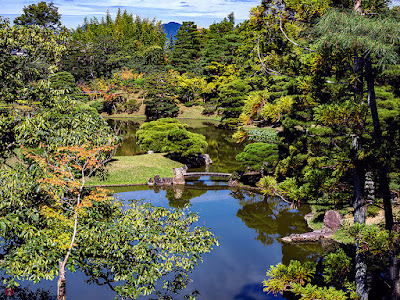My photographic notes about the four seasons in Kamakura or the gardens of Zen
October 28, 2022
Shokin-tei teahouse and pond garden: Katsura-rikyu (Kyoto)
The imaginary view of the moonlit pond garden: Katsura-rikyu (Kyoto)
Shin-goten (new palace): Katsura-rikyu (Kyoto)
The interior of Gepparo teahouse: Katsura-rikyu (Kyoto)
The view of Shokin-tei teahouse from Gepparo teahouse: Katsura-rikyu (kyoto)
Shoiken teahouse: Katsura-rikyu (Kyoto)
The interior of Shoiken teahouse: Katsura-rikyu (Kyoto)
This teahouse is designed as a lookout for viewing the spring landscape of the pond garden and is similar to the "Monomi" (watch tower) that existed in the traditional residence of a court noble.
The upper part of the wall facing the outside of the "Kuchi-no-ma" (outer room) is decorated with six moon-shaped Shitaji-mado (base window), which is adding a witty and polished ornamental design to this farmhouse-style teahouse.
The middle room has a window that fills the entire frontage of the two rooms, and this window is intended to present quiet rural scenery along the Katsura River.
The long and narrow waist wall at the bottom of this window is decorated with eccentric and stylish ornaments in the fashion of the Edo period. The center of this long horizontal wall is divided into parallelograms, which are covered with gold leaf, and the triangular spaces on either side are covered with velvet in a checkerboard pattern.
.jpg)
.jpg)
.jpg)
.jpg)

.jpg)
.jpg)




-.jpg)

%2001.jpg)
%2002.jpg)
.jpg)
.jpg)
%2002.jpg)
%20.jpg)
.jpg)
%2001.jpg)